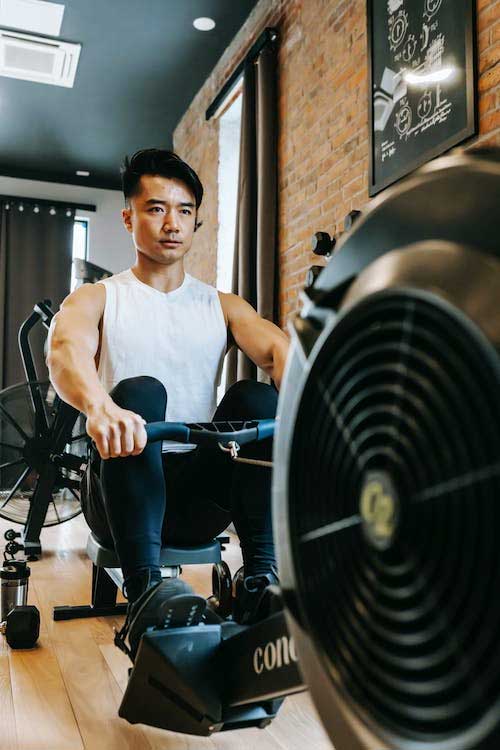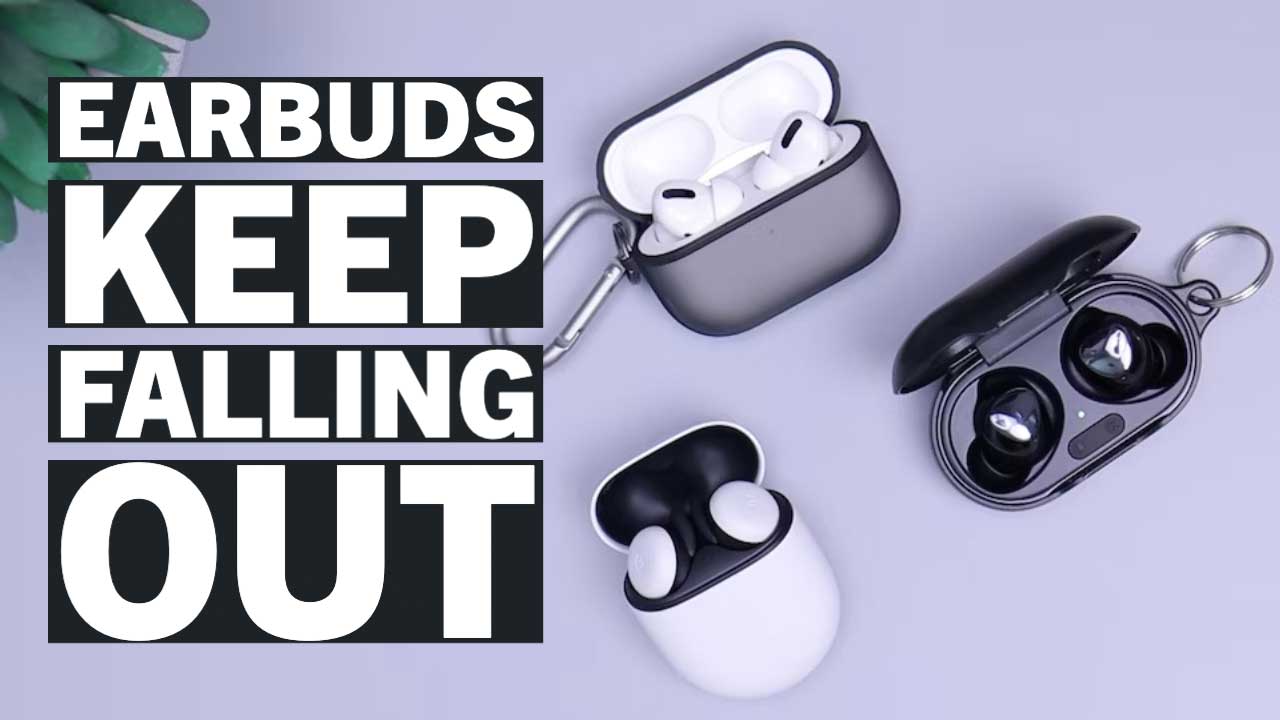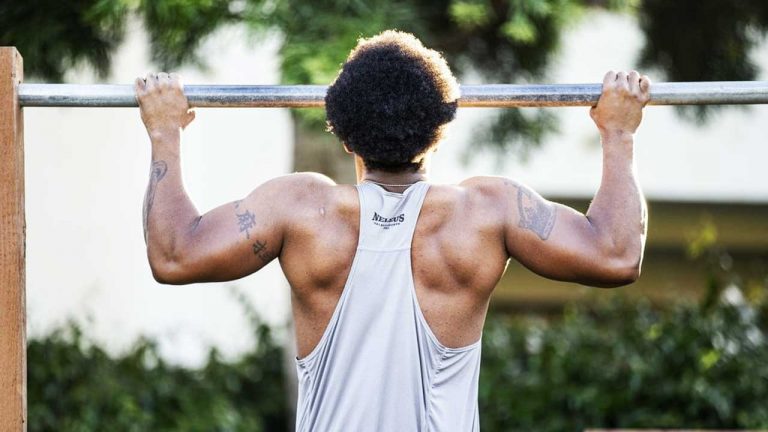Is Rowing Machine a Good Workout? The Ultimate Guide to a High-Efficiency Exercise

ListedFit is reader-supported. When you buy through links on our site, we may earn a small commission.
Are you looking for a full-body workout that can help you burn calories and build muscle? If so, you might want to consider rowing. Rowing is a low-impact exercise that can be done on a rowing machine or in a boat, and it has numerous benefits for your health and fitness.
According to Live Science, rowing is a great way to work out because it engages multiple muscle groups at once. In fact, rowing uses 86% of your muscles, making it one of the most efficient workouts you can do. It also provides a cardiovascular workout, which can help improve your heart health and endurance.
But is rowing really a good workout for everyone? While rowing can be a great way to get in shape, it’s important to consider your fitness level and any pre-existing health conditions before starting a new workout routine. In this article, we’ll take a closer look at the benefits of rowing, as well as some of the potential drawbacks to keep in mind.
Table of Contents
What Are the Benefits of Rowing
Cardiovascular Benefits
Rowing is an excellent cardiovascular exercise that can help improve heart health. It is a low-impact exercise that can be performed at different levels of intensity, making it suitable for people of all fitness levels. According to Sport Fitness Advisor, rowing can help improve cardiovascular endurance, reduce blood pressure, and lower the risk of heart disease.

Can Rowing Build Muscle?
Rowing is a full-body workout that can help improve muscular strength and endurance. It targets the major muscle groups in the legs, arms, back, and core. According to Women’s Health, rowing can help tone and strengthen the muscles, leading to improved posture and reduced risk of injury.
Additionally, rowing can help improve flexibility and joint mobility. The movement involved in rowing requires a full range of motion, which can help improve joint health and reduce the risk of injury.
Low Impact Exercise
Rowing is a low-impact exercise that can be a great alternative to high-impact exercises like running. It puts less stress on the joints, making it suitable for people with joint pain or injuries. According to Live Science, rowing can help improve joint health and reduce the risk of injury, making it a great exercise for people of all ages.
Moreover, rowing can be a great exercise for weight loss. It is a high-intensity exercise that can burn a significant amount of calories in a short amount of time. According to Shape, rowing can burn up to 600 calories per hour, making it an effective exercise for weight loss.
Can You Get in Shape by Just Rowing?
Rowing is an excellent workout to get in shape, but can you get in shape by just rowing? The answer is yes, but it depends on your fitness goals and how you approach your rowing workouts.
Rowing is a full-body workout that engages your legs, core, back, arms, and shoulders. It is a low-impact exercise that is gentle on your joints, making it an ideal workout for people of all ages and fitness levels.
If your goal is to improve your cardiovascular health, rowing can help you achieve that. It is an effective way to increase your heart rate and improve your endurance. You can also adjust the resistance level on the rowing machine to make your workouts more challenging and burn more calories.
However, if your goal is to build muscle mass, rowing alone may not be enough. While rowing does engage your muscles, it may not provide enough resistance to stimulate muscle growth. To build muscle mass, you may need to incorporate other exercises such as weightlifting.
Is 20 Minutes of Rowing Machine Enough?

Many people wonder if they can achieve their fitness goals by rowing for just 20 minutes a day. While it is not a long time, 20 minutes of rowing can still provide some benefits to your body.
According to Rowing Crazy, rowing for 20 minutes can burn an average of 85 calories, depending on your weight and speed. However, this might not be enough to make a significant impact on weight loss if you’re not combining it with a healthy diet and other exercises.
That being said, rowing for 20 minutes a day can still provide some health benefits. It can help improve your cardiovascular health, strengthen your muscles, and increase your endurance. According to Shape, even just 15 minutes of rowing can be a serious aerobic workout and provide a full-body workout.
It’s important to note that the benefits of rowing for 20 minutes a day may vary depending on your fitness level, weight, and overall health. It’s always best to consult with a healthcare professional before starting any exercise routine.
How Many Calories Does Rowing Machine Burn?
One of the biggest benefits of rowing is its ability to help you burn calories. Rowing is a full-body workout that engages multiple muscle groups, which means it can burn a significant amount of calories in a short amount of time.
The number of calories you burn while rowing depends on a variety of factors, including your weight, the intensity of your workout, and the duration of your workout. According to Healthline, a 155-pound person can burn approximately 280 calories in 30 minutes of moderate-intensity rowing, while a 185-pound person can burn approximately 335 calories in the same amount of time.
However, it’s important to note that the number of calories you burn while rowing will vary depending on your individual circumstances. For example, if you increase the intensity of your workout or row for a longer period of time, you will burn more calories. Additionally, if you weigh more than 155 or 185 pounds, you may burn more calories than the examples given above.
Overall, rowing is an effective way to burn calories and can be a great addition to your weight loss routine. By incorporating rowing into your workout regimen, you can increase your calorie burn and work towards your weight loss goals.
Rowing Machine vs. Other Cardio Equipment
| Cardio Machine | Pros | Cons |
|---|---|---|
| Rowing Machine | Full-body workout; Low-impact; Burns calories effectively; Builds strength & endurance | Requires proper technique; Can be monotonous |
| Treadmill | Simulates natural running/walking; Adjustable incline & speed; Tracks progress easily | High-impact on joints; Can be monotonous |
| Stationary Bike | Low-impact; Good for joint rehab; Easy to use | Primarily lower body; Can be uncomfortable |
| Elliptical Trainer | Low-impact; Full-body workout; Mimics natural stride; Adjustable resistance | Can be monotonous; Less natural movement |
| Stair Climber | Targets lower body; Simulates stair climbing; Burns calories effectively | Can be hard on knees; Primarily lower body |
| Jump Rope | Inexpensive; Portable; Full-body workout; Improves coordination | High-impact on joints; Requires coordination & skill |
When it comes to cardio equipment, there are many options available, including treadmills, ellipticals, and stationary bikes. But how does the rowing machine compare to these other options?
One major advantage of rowing machines is that they provide a full-body workout. While running on a treadmill primarily works the lower body, rowing engages both the upper and lower body, as well as the core. This means that rowing can be a more efficient use of time for those looking to work multiple muscle groups in one workout.
Additionally, rowing is a low-impact exercise, which can be beneficial for those with joint pain or injuries. While running on a treadmill or using an elliptical can be hard on the knees and ankles, rowing is gentler on the joints.
Another benefit of rowing is that it can be a great option for those looking to improve their cardiovascular fitness. According to Livestrong, rowing is just as efficient as other indoor exercises when it comes to energy exertion.
However, it is important to note that rowing may not be the best option for everyone. Those with back pain or injuries may find rowing uncomfortable, as it can put strain on the lower back. Additionally, those who are new to rowing may need to take some time to learn proper form in order to avoid injury.
The rowing machine can be a great option for those looking for a full-body, low-impact workout that can improve cardiovascular fitness. But it is important to consider individual needs and limitations when choosing a cardio exercise.
Is Rowing Machine Better for You Than Running?

When it comes to deciding between rowing and running, there are several factors to consider. Both are great cardiovascular exercises that can help you improve your overall fitness and health. However, rowing and running have different benefits and drawbacks.
One of the main advantages of rowing over running is that it is a low-impact exercise. While running can put a lot of stress on your joints, rowing is gentler on your body. This makes it an excellent choice for people who have joint problems or are recovering from an injury.
Another advantage of rowing is that it is a full-body workout that engages more muscle groups than running. Rowing works your legs, core, back, and arms, while running primarily works your lower body. This means that rowing can help you build more muscle and improve your overall strength and endurance.
However, running has some benefits that rowing does not offer. For example, running is a weight-bearing exercise, which means that it can help improve bone density and reduce the risk of osteoporosis. Running also burns slightly more calories than rowing, although rowing offers a fuller-body workout.
Ultimately, the choice between rowing and running depends on your personal preferences, fitness goals, and physical limitations. If you are looking for a low-impact, full-body workout that can help you build strength and endurance, rowing may be a better choice for you.
But if you enjoy running and want to improve your bone health and burn more calories, running may be a better option.
Proper Rowing Technique
Rowing is an excellent full-body workout that can provide a range of benefits if done with proper technique. Here are some guidelines to follow:
- Start in the catch position with your knees bent, shins vertical, and arms reaching forward.
- Drive with your legs, keeping your back straight and core engaged.
- Once your legs are extended, lean back slightly and pull the handle towards your chest.
- Reverse the motion by pushing the handle away, leaning forward, and bending your knees.
- Repeat the sequence, maintaining a smooth and controlled motion.
It’s important to avoid common mistakes such as hunching your shoulders, rounding your back, or using too much arm strength. Instead, focus on using your legs as the primary source of power, and maintaining a strong and stable core throughout the movement.
Another key aspect of proper technique is maintaining a consistent rhythm and pace. This can help you avoid fatigue and maximize your endurance during longer rowing sessions.
Experiment with different stroke rates and find a pace that feels comfortable and sustainable for your fitness level.
Conclusion
After researching and analyzing the benefits of rowing machine workouts, it is clear that rowing is a great form of exercise for people of all ages and fitness levels. It engages multiple muscle groups, improves cardiovascular health, and can even help with weight loss and maintenance.
Additionally, rowing is a low-impact exercise that is easy on the joints, making it a great option for those with injuries or chronic pain. It also has the added benefit of improving posture and reducing back pain.
While rowing may not be the only exercise you need, it can certainly be a valuable addition to your fitness routine. Whether you’re looking to improve your overall health, build muscle, or burn calories, rowing can help you achieve your goals.
Overall, if you’re looking for a fun, challenging, and effective workout, rowing is definitely worth considering. Just be sure to start slowly, use proper form, and listen to your body to avoid injury.
Author
Latest entries
 FitnessAugust 19, 2023Yohimbe vs Yohimbine: A Quick Comparison Guide
FitnessAugust 19, 2023Yohimbe vs Yohimbine: A Quick Comparison Guide AshwagandhaJune 16, 2023Is Ashwagandha Good for Working Out? Key Benefits Explored
AshwagandhaJune 16, 2023Is Ashwagandha Good for Working Out? Key Benefits Explored Sports HeadphonesMay 25, 2023Why Your EarBuds Keep Falling Out – Quick and Easy Solutions
Sports HeadphonesMay 25, 2023Why Your EarBuds Keep Falling Out – Quick and Easy Solutions Nike ShoesMay 12, 2023Do Nikes Run Big or Small? Decoding the Perfect Fit
Nike ShoesMay 12, 2023Do Nikes Run Big or Small? Decoding the Perfect Fit
Affiliates:
This post may contain affiliate links that at no additional cost to you, the site may earn a small commission. We only recommend products we would use ourselves and all opinions expressed on this site are our own.
General Advice:
The information provided in this article is for general informational purposes only. It is not intended as a substitute for professional advice. Always consult with a qualified healthcare professional before starting any new diet, exercise program, or making changes to your health routine.
Accuracy Advice:
While we strive to provide up-to-date and accurate information, the content in this article may not reflect the most current research or medical guidelines. We encourage readers to do further research and consult with professionals for more personalized advice.
Our Recommendations:
The products and services mentioned in any of our articles are recommended based on our independent research and personal experience. We are not sponsored by any company. We aim to suggest products and services we believe are of high quality and could be beneficial to our readers.





